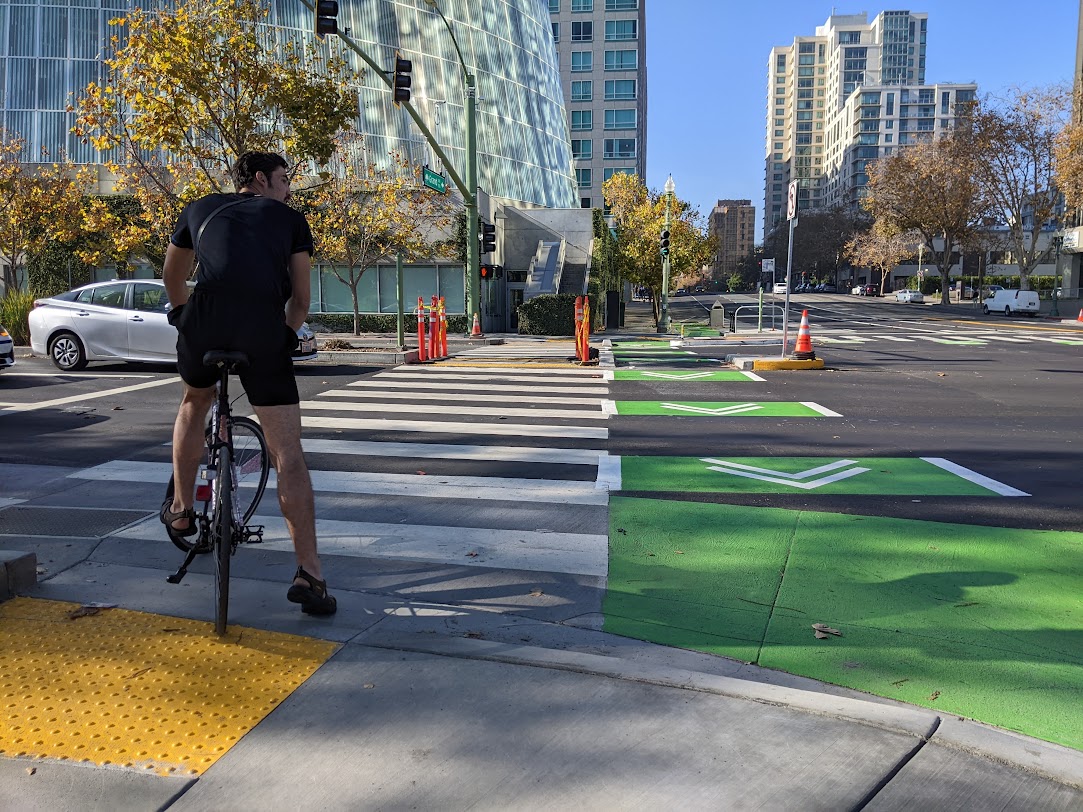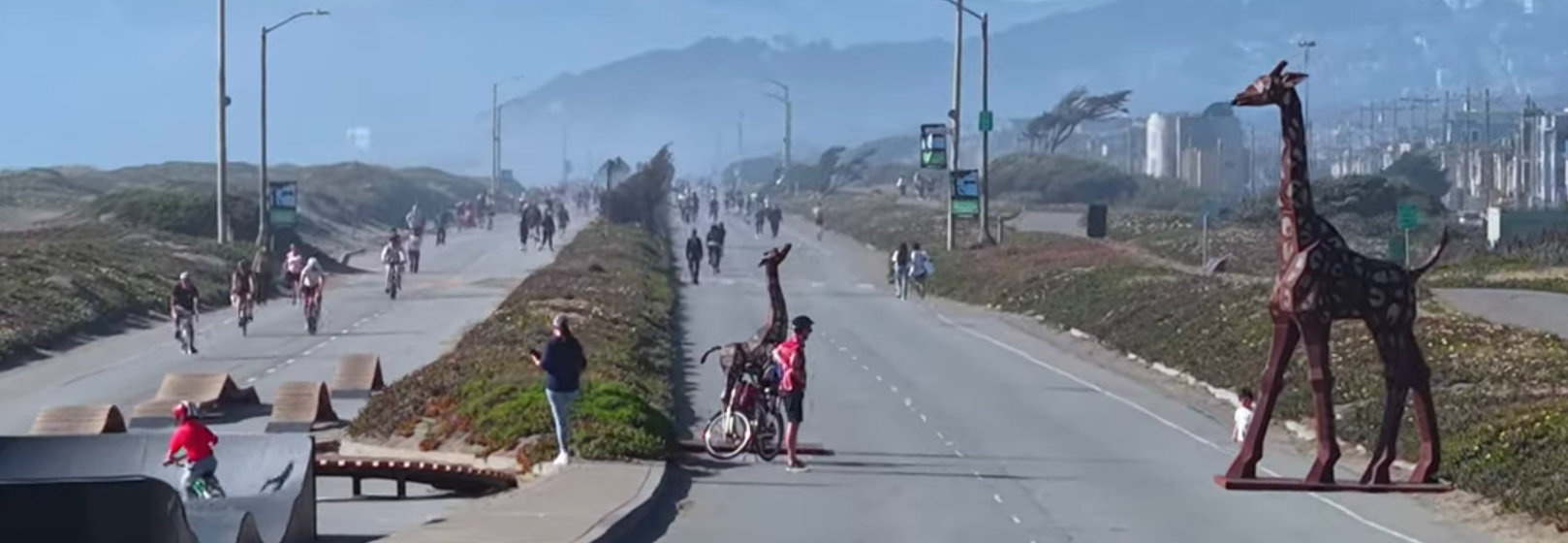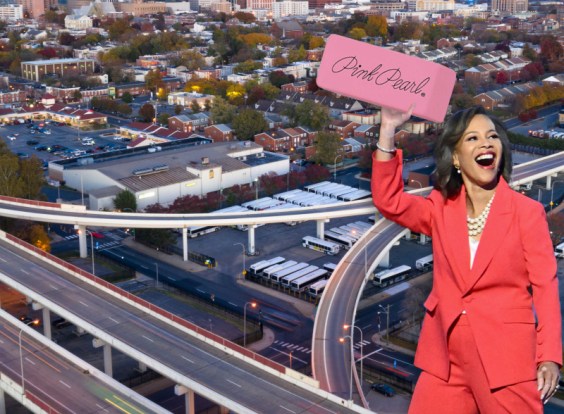Another San Francisco pedestrian was killed by a driver, the tenth this year, around 12:30 a.m. Wednesday in the Excelsior District. The driver reportedly fled the scene, so one can hope the police will do a real investigation.
From Walk San Francisco's statement:
Mission Street at Santa Rosa is on the city’s 2022 “high-injury network” map: the 12% of streets where 68% of traffic crashes occur. There have been six other traffic collisions resulting in injuries at the intersection of Mission and Santa Rosa since the beginning of 2015. Five of the six crashes involved pedestrians.
The section of Mission Street where the crash occurred is quite wide, with four vehicle travel lanes – a street design that drivers often feel comfortable speeding on and is a long distance for pedestrians to cross. Safety improvements along the corridor are currently under construction as part of the Mission / Geneva Safety Project, including new pedestrian bulb-outs at Mission Street and Santa Rosa Avenue.
A concrete bulb-out is already outlined on the pavement at the corner where the pedestrian was killed, as seen in the image below:
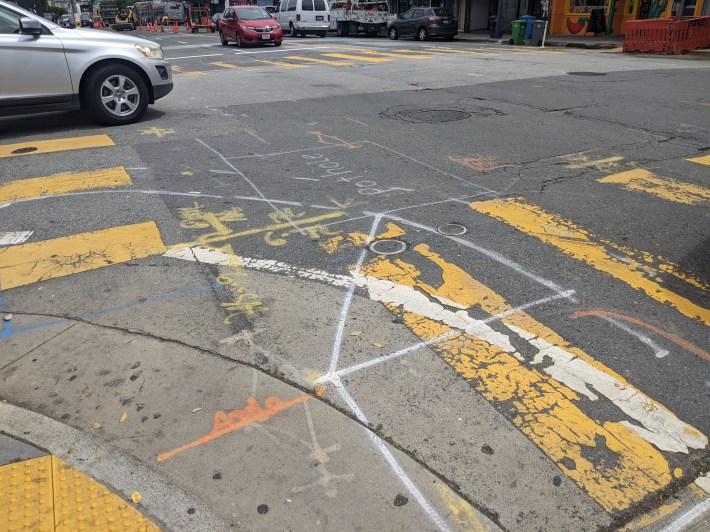
Streetsblog confirmed with SFMTA that this will be a concrete extension of the curb for the bulb-out and not another painted and plastic installation. The work should be completed early next year.
And here's a look at the timeline for this project (see below). Clearly, it's been known for many years that this is a dangerous street in need of a redesign, as mentioned by Walk SF.

There are a couple of takeaways familiar to Streetsblog readers. First, it's great that this project is finally happening, but doing years of outreach on key safety projects costs lives. If a sinkhole opened in the street and started swallowing drivers, the city would just fix it. The city is in the middle of a traffic violence emergency. There needs to be urgency when dangerous conditions threaten pedestrians and cyclists.
Then there's the ongoing folly of installing quick-build, temporary safety installations out of plastic instead of using solid planters or concrete blocks. New York, which has made progress towards Vision Zero, protects pedestrians and narrows intersections with granite and concrete in its quick builds, as seen below:
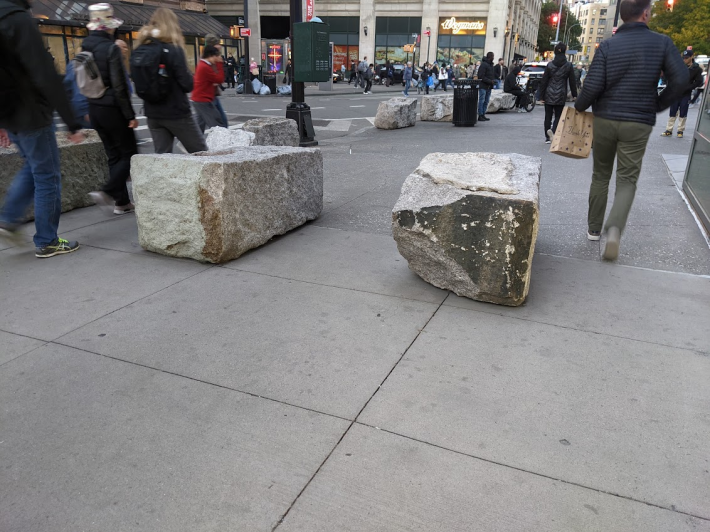
The driver in Wednesday's tragedy, given that they fled the scene, was almost certainly driving recklessly and perhaps intoxicated. Quick-build and permanent installations both need to be robust enough to stop reckless drivers before they kill someone. Deterrents aren't enough. Yes, the concrete curbs that are coming to Mission Street will be a great improvement. But ideally it takes truly solid installations that are designed to stop reckless drivers cold, as seen below in New York City:
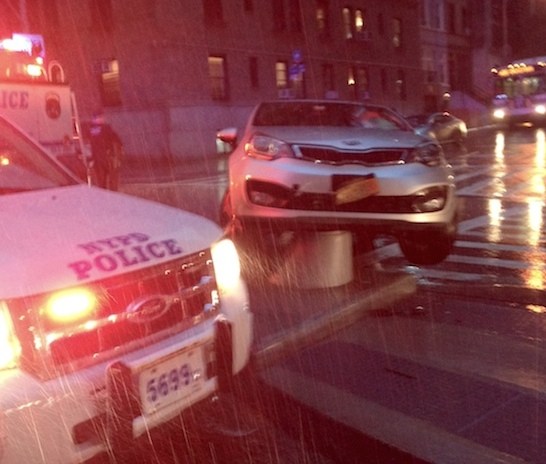
A tour of the area where this tragedy occurred underscored that reality, given the number of soft-hit posts and other installations that were put in a few years ago, and have failed completely (see the image below across the street from where the man was killed). Cities need to do better.

Again, this isn't about money. The city manages to find concrete to deter encampments or to protect sidewalks during big conferences. This is about priorities. Right now, the priority seems to be to avoid damaging people's cars at all costs. And that cost is failing at Vision Zero.
“Solutions exist to make streets safer,” said Walk SF's Marta Lindsey in a statement about Wednesday's crash. “Vehicles are bigger, heavier, and more powerful and dangerous driving behavior is worse than ever,” she added. “It’s a deadly combination and a serious public health threat. San Francisco must take on traffic safety more aggressively and comprehensively.”

